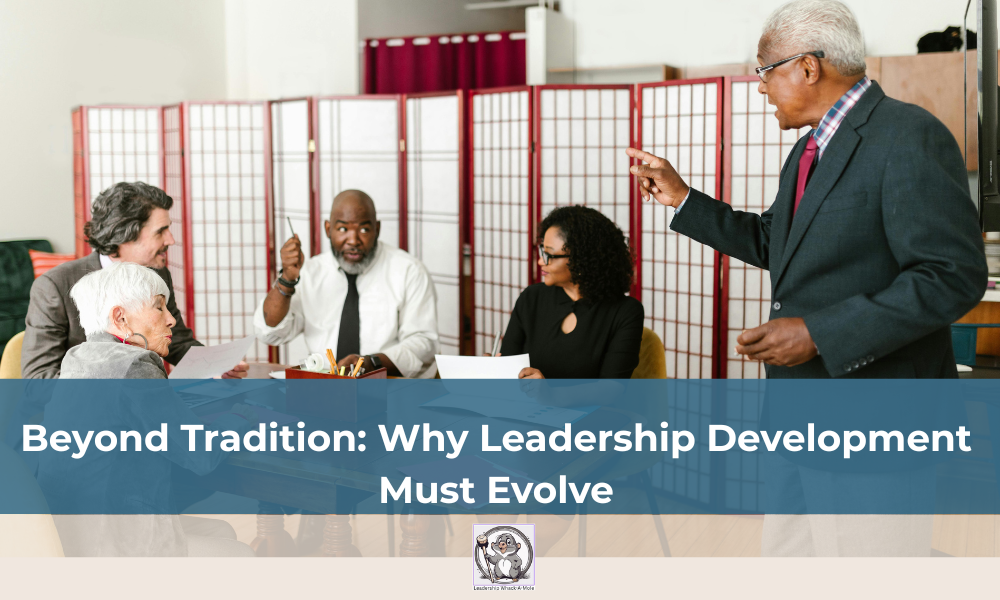
By Jeff Fierstein
Leadership is a concept with hundreds of definitions—so it’s no surprise that leadership development programs often lack consistency. Studies frequently attempt to identify the most effective leadership competencies, yet their conclusions rarely align. While some core competencies appear repeatedly, the majority of findings vary significantly, reflecting the diverse and evolving expectations of leaders across industries.
Traditional leadership development methods still dominate many organizations. These programs often rely on static content—reading well-known but outdated books like Good to Great (2001) or In Search of Excellence (1982), followed by group discussions or sporadic interactive activities. While such content may still have value, this approach fails to meet the demands of today’s fast-changing business environment.
Modern markets are evolving at an unprecedented pace. To keep up, leadership development must go beyond traditional models. The most effective approaches are experiential and hands-on—such as job redesign, cross-functional projects, and real-time problem-solving. Yet even these methods often rely on conventional content that lacks the adaptive dimension necessary for long-term success.
The competencies required of leaders today are fundamentally different. Strategic and systems thinking, adaptability, cross-functional collaboration, decentralized decision-making, cultural agility, and change management have become essential. Leaders must also be equipped to understand customer behavior shifts, integrate values into decision-making, and work effectively with emerging technologies like artificial intelligence.
Consider the impact of the COVID-19 pandemic. Businesses that lacked adaptive leadership capabilities were unable to pivot quickly and ultimately closed their doors. In contrast, companies that shifted operations—like restaurants moving to takeout-only or retailers focusing on e-commerce—survived and, in some cases, thrived. As Charles Darwin noted, “It is not the strongest of the species that survives, nor the most intelligent, but the one most adaptable to change.”
Leadership development programs must go beyond information delivery. The mode of learning and its application in real work environments are crucial. Research from the Center for Creative Leadership (McCall et al., 1988) confirms that classroom training alone has limited effectiveness. Despite this, the global market for leadership development—valued at $166 billion (Westfall, 2019)—continues to be dominated by these traditional methods.
Real development occurs through structured, on-the-job experiences—such as job rotations, mentoring, cross-functional team projects, and learning from failure. These methods help individuals build the adaptive competencies required for leadership success. Importantly, these experiences must be guided by skilled mentors or higher-level managers, not solely by HR or Learning & Development departments. Passive learning through self-paced courses or workshops simply does not suffice.
A “one size fits all” approach to leadership development is outdated. Each leader’s context—organizational culture, team dynamics, and strategic priorities—is unique. Development programs must be customized to reflect the specific challenges and future needs of the organization.
As organizations prepare leaders for succession and promotion, development plans should be aligned with strategic goals and shifting market realities. Lower-level managers should be groomed for higher-level roles, with increased responsibility in decentralized decision-making, innovation, and cultural transformation. These skills will be vital in building resilient, future-ready organizations.
Longitudinal research at the Center for Creative Leadership underscores the power of real-world experience in leadership development. According to the widely accepted 70-20-10 model (Pedler, 1997), effective leadership growth consists of 70% challenging assignments, 20% developmental relationships, and only 10% formal coursework. This is how successful leaders learn and evolve.
Going forward, leadership development must prioritize adaptability, strategic foresight, and agility. Organizations must identify, hire, and promote individuals who not only demonstrate current competence but also show the potential to grow into tomorrow’s adaptive leaders.
Adapted from: Leadership Whack-A-Mole: Actionable Strategies for Leadership Challenges (c) Ric Shriver and Jeff Fierstein 2024.To learn more about the book, peruse this website or click on the banner below.
We’d love to hear your comments about this topic and your experience with it. Add your comment below and we’ll respond to you.




